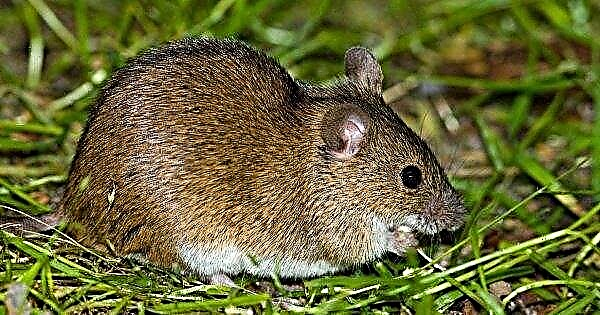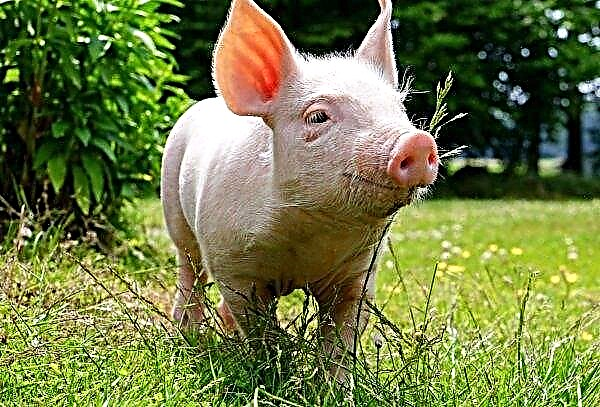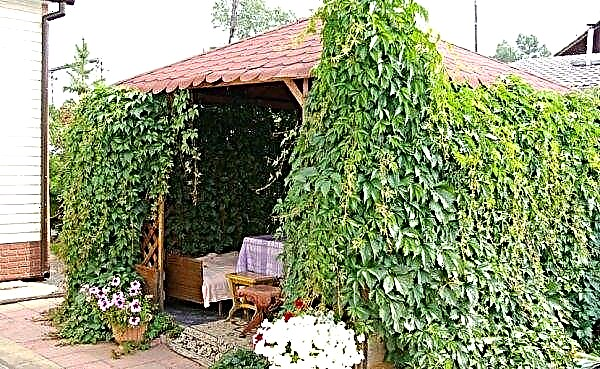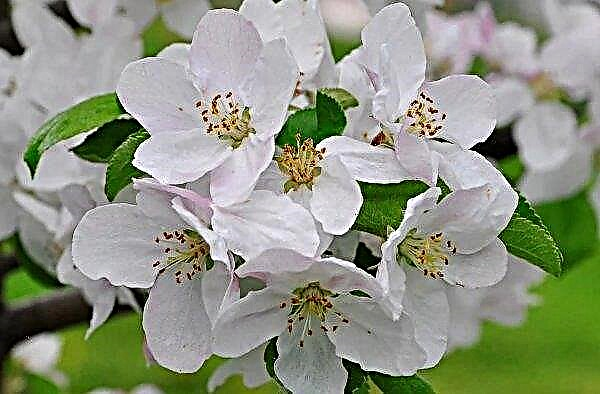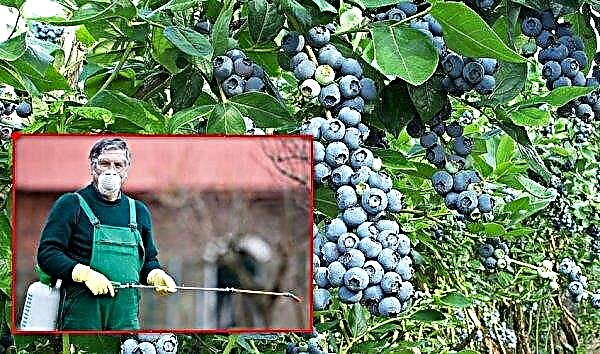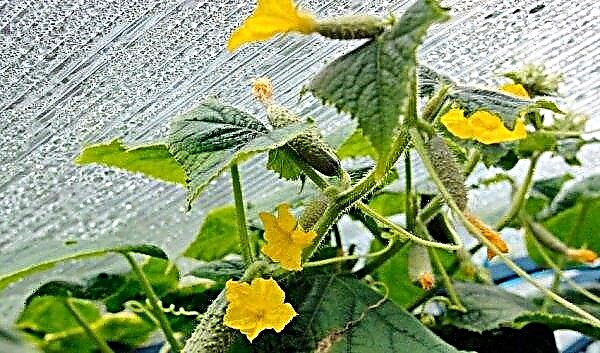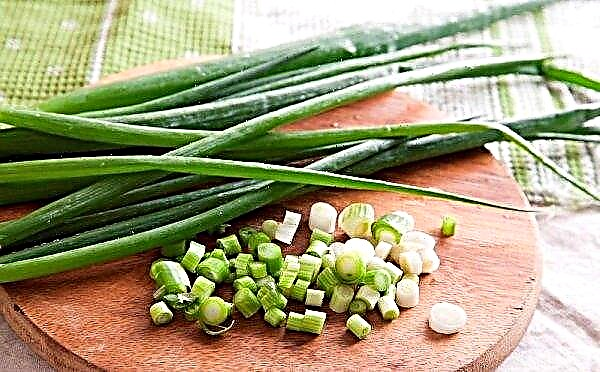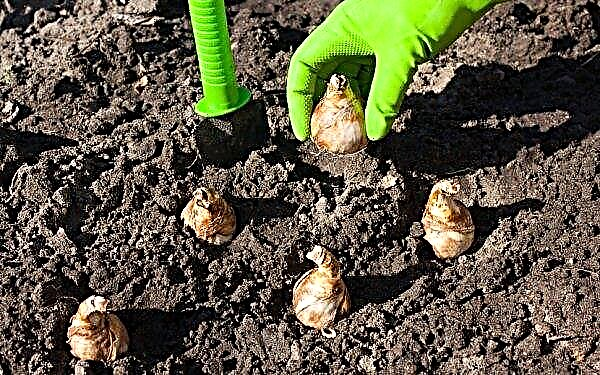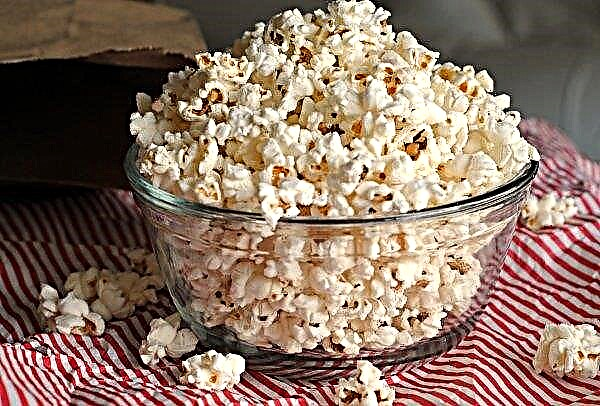Each owner of a dovecote or a professional poultry breeder is familiar with the breed of Baku fighting pigeons. This variety belongs to high-flying, and is also famous for its endurance, game and unpretentiousness in everyday life. In this article you will learn more about this beautiful breed, its features, preferences in terms of nutrition and maintenance.
Breed history
Since Baku pigeons were bred on the basis of the Iranian breed, Persia, to which the territory of modern Azerbaijan belonged, was considered to be their homeland. It was there that in the XVIII century the first specimens of a new species appeared, which was officially registered in modern Iran. Pigeons got such an unusual name thanks to the city of Baku, enthusiasts from which for many years bred this breed. For years, whole family dynasties selected the best manufacturers, trained them to achieve a result.
Pigeons got such an unusual name thanks to the city of Baku, enthusiasts from which for many years bred this breed. For years, whole family dynasties selected the best manufacturers, trained them to achieve a result.
It was their efforts that made it possible to create a breed with good health, excellent flight characteristics and excellent adaptive abilities. And although at the moment its appearance has undergone changes, the advantages of these birds have been preserved.
Did you know? Not everyone knows that the concept of “fighting” has nothing to do with fighting. In pigeon terminology, this means a special sound, similar to the clicking, which the wings of birds emit during the performance of tricks.
Appearance
Thanks to various breeding measures, pigeons of the Baku breed have many colors. But despite this diversity, we can distinguish features characteristic of all subspecies:
- the size of these birds varies between 34–37 cm;
- the head is covered with smooth feathers, has an oval shape, crowned with a crest;
- narrow, lively, sparkling eyes, covered with thin eyelids;
- the thin beaks of these pigeons are rarely longer than 2.5 cm, and their tips are slightly bent down;
- a rather long, graceful neck connects the head to the body;
- the body of the Bakuis is beautiful, proportionate and muscular;
- a broad shoulder at the shoulders tapers toward the tail;
- powerful wings are usually tightly pressed to the body, and their ends almost intersect.

Breed characteristics
Baku pigeons occupy a leading position among all breeds in a number of characteristics:
- flight altitude;
- its duration;
- the ability to navigate the terrain;
- the beauty and diversity of plumage.
Flying and playing
Beauties originally from Baku have their own special flight style, which distinguishes them from other breeds. When they are in the sky, they prefer to stay separate, demonstrating their skills individually. At the same time, they are poorly visible from the ground - so high the birds rise.
Important! From time to time, one can see these pigeons flying horizontally or in the manner of “sliding along the boats,” but this technique is considered a drawback with respect to them.
When evaluating their games, they pay attention to cleanliness and correctness, highlighting the following types of battle:
- "With the exit to the pillar." During this trick, the bird first flies vertically upward, and then abruptly rolls back, throwing its head back. In this case, the game is accompanied by a loud flapping of wings.
- Performing the “Pillar with Screw”, the dove shuttles, remembering to flap its wings.
- “Dependent battle” distinguished by an unhurried rhythm of flight, during which the Baku People freezes in the air, making somersaults and ascents. The flip speed is lower in this case, but they are beautifully outlined by the clicks of the wings.

Advantages and disadvantages
- Pros of breed:
- beautiful flight;
- endurance;
- strong immunity;
- unpretentiousness in the content;
- variety of colors and subspecies.
As you can see, the breed is distinguished by some advantages, however, inside the species itself, poultry farmers often conduct culling based on certain criteria. They are conditionally divided into permissible and unacceptable shortcomings.
Important! Another feature of this species is heredity. Marble pigeons are born only in cases where this species belong to females.
- Conditionally acceptable disadvantages ::
- slightly rounded crown;
- pale flesh-colored eyelids;
- neck without bending.
- Unacceptable disadvantages:
- not long enough body;
- humpbacked back;
- high nape or forehead;
- short or, on the contrary, too thick beak;
- colored eyes;
- short thick neck;
- small wings;
- the presence of feathers on the toes;
- protruding chest;
- cuts on the tail feathers;
- short tail;
- liquid plumage.
Varieties of breed
Over the past 50 years, breeders have managed to significantly expand the intraspecific classification of Baku pigeons. Today, poultry farmers distinguish dozens of varieties of these birds, depending on their color and appearance. Consider the most popular subspecies of Baku People.
Did you know? On the body of an adult pigeon is up to 10 thousand feathers.
Wide tailed
This subspecies is known for its ability to stay in the air for a long time, therefore these birds are considered the main representatives of the breed. They can be distinguished by light shades of feathers: most often they are milky, ashy or snow-white, so these powerful birds have an aesthetically attractive appearance.
Marble
Perhaps the most unusual variety of Baku People, which distinguishes mottled colors. By the tone of these specks one can roughly determine the age of the birds: the older they are, the darker and richer the color.
Necks
White plumage, cherry-colored eyes, not covered for centuries, as well as a neck without a bend typical of Bakuis, but with a characteristic bright (red, gray or black) spot are signs of pigeons of this subspecies. As for the color, it can be different: yellow, gray, red and even black.
Black-tailed and red-tailed
Externally, this subspecies differs from others only in the black or red color of the tail feathers. Like its brethren, the black-tailed pigeon has excellent flight characteristics, but nevertheless he demonstrates himself best in the “pillar” technique. During this trick, the bird takes off to a height of 15 m, making continuous flip-flops. In addition, this species learns this game very quickly.
Chile
This variety has features not only in appearance, but also in behavior: they are characterized by sudden flip-flops after a stand. They also love long, protracted flights before the game. Chile has variegated coloring, plumage on the chest, shimmering purple and with black or red markings. They are located mainly on the tail, head or cheeks. A slightly elongated head is crowned with a forelock.
Chile has variegated coloring, plumage on the chest, shimmering purple and with black or red markings. They are located mainly on the tail, head or cheeks. A slightly elongated head is crowned with a forelock.
Did you know? In nature, there are pink doves. They are found only in one point of the globe - on the island of Mauritius.
Mirrored Yellow
These Baku People have a symmetrical pattern on their feathers, distinguishing them from their brethren. As for colored blotches, they are found on the sides and tail. This is one of the newest varieties of slaughter pigeons from Baku, therefore it is often called in its own way in different countries.
Maintenance and care
The rules for keeping Baku People depend not only on the type of birds, but also on the current legislation. The fact is that pigeons are considered to be scavenger birds that can spread diseases that are dangerous to human life.
Important! Make sure that rodents, dogs or cats cannot enter the room to the birds.
Therefore, for the maintenance of the dovecote, it is necessary to obtain permission from the sanitary inspection authorities, which preliminary conduct inspection of the premises for compliance with the standards. At home, Baku People are also sometimes kept in cages and aviaries.
Room requirements
If you plan to breed pigeons in a specially designed pigeon-room, then you should adhere to the following rules:
- for 1 bird lay at least 1.5 square meters. m area;
- the height of the structure should be more than 1.5 m;
- in the dovecote, be sure to take care of the presence of ventilation;
- the walls in the room must be plastered and whitened for disinfection purposes;
- for the convenience of birds, the dovecote is equipped with perches;
- optimal indoor air temperature for pigeons - 20–24 ° С;
- litter is laid on the floor, the thickness of which is at least 5 cm.
 For the prevention of diseases, once a month in the dovecote, it is worthwhile to carry out disinfection, for the period of which the Baku People need to be temporarily relocated. The keeping of birds in open-air cages provides for the same rules. As for the cells, there are 2 basic requirements for them:
For the prevention of diseases, once a month in the dovecote, it is worthwhile to carry out disinfection, for the period of which the Baku People need to be temporarily relocated. The keeping of birds in open-air cages provides for the same rules. As for the cells, there are 2 basic requirements for them:- it is advisable to choose stainless steel products;
- the size of the cage should allow the dove to spread its wings.
Feeding pigeons
A varied diet and an established diet allow Baku People to be healthy and always full of strength. Each poultry breeder has his own peculiarities of feeding these pigeons. Many believe that they should be underfed so that they are better obeyed by the owner. But everyone agrees with the statement that it is definitely not worth overfeeding them.
The “upbringing” of pigeons in terms of food should begin with their birth. From the first day of life, you need to accustom the chicks to the regime and give a variety of foods of soft consistency.
Important! The brighter the color of millet grains, the more useful elements in them.
As birds grow older, their menu becomes more and more extensive. Traditionally, it includes:
- Millet. It is rich in vitamins, affordable, so many feeds use it as a base crop.
- The basis of the pigeon diet is also used wheat. This is a very nutritious food for Baku People, but it does not have enough natural calcium, so you need to give additional mineral supplements.
- Oats - A useful and affordable product, but not very loved by pigeons due to the large amount of fiber and husk.
- Barley experts call it perhaps the best bird food, but it is advisable to give it in crushed form.
- It is rich in vitamins and minerals. corn, although it has a significant grain size. Therefore, for pigeons, only fine-grained varieties are chosen. In addition, this product is given to them extremely carefully, since it can lead to feathered obesity.
- Great for bird feed rice it’s a healthy and nutritious culture. But he has a significant minus - the price.
 Basic crops in the diet of pigeons are supplemented with various additives in the form of flax seeds, sunflower, hemp, etc.
Basic crops in the diet of pigeons are supplemented with various additives in the form of flax seeds, sunflower, hemp, etc.In the summer, they always give freshly picked, but chopped greens. Pigeons especially like spinach, dandelions, lettuce. The increase in fresh foods in the diet allows you to do without additional vitamin complexes.
But in the winter without them in any way. The pigeon's body actively responds to a lack of vitamins in the cold, so you can not do without special impurities to feed.
Did you know? Doves lay eggs only in the presence of males. Knowing this peculiarity of birds, in many kennels, mirrors are placed in front of their nests so that gullible birds can sweep calmly.
Coaching and training
Baku pigeons begin to train as early as possible. Usually this happens by the 30–40th day of life, but it happens that training begins only when the birds reach 2 months of age. It all depends on the state of the birds themselves, as well as their conditions. Experienced breeders are sure that the sooner training begins, the better, because as they grow older, it will be difficult to instill the necessary skills in them. At first, young birds do not turn out very well at first: they fall on the tail, losing height, but this is a temporary phenomenon. Usually, after 2-3 months of active training, the pigeon already performs the elements correctly.
At first, young birds do not turn out very well at first: they fall on the tail, losing height, but this is a temporary phenomenon. Usually, after 2-3 months of active training, the pigeon already performs the elements correctly.
Another important nuance worth remembering is the battle. If a young Baku People started to hit 15–20 days after takeoff, then after a molt his game is likely to change. During training, experts recommend running no more than 7-8 birds at a time. In practice, sometimes up to 20 pigeons are released into the sky at once, when it comes to young animals.
Important! Finally style is formed to 2–3 years of the bird’s life, therefore, only individuals older than this age are taken to the tribe.
Experienced breeders have their own tricks regarding training, allowing you to grow real masters of the game and battle. Today we will tell some of them:
- before the first flights, young animals are fed less than usual, so that birds have an incentive to rush to the call of the owner;
- in winter, in fog or rain, outdoor training is not carried out, as there is a risk of injury or damage to the health of the pigeon;
- 2 days before and after oviposition, the females are not disturbed;
- if chicks appeared, then parents are not distracted from them during the first week of the life of the babies;
- before the upcoming competitions, in 3-4 days, pigeons try not to give heavy feed;
- to improve the work of birds 1 hour before the performance they are given water;
- It’s better to train youngsters and more experienced Baku People separately;
- if possible, it is also worth sharing males with females;
 Baku war pigeons will become the pride of any breeder or dovecot if they are provided with proper conditions. This does not require much effort, it is enough to provide a complete, nutritious diet, as well as actively work on improving their flight skills during training.
Baku war pigeons will become the pride of any breeder or dovecot if they are provided with proper conditions. This does not require much effort, it is enough to provide a complete, nutritious diet, as well as actively work on improving their flight skills during training.

